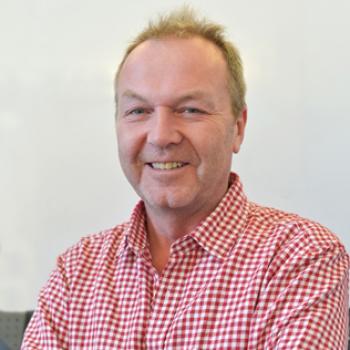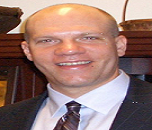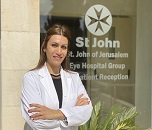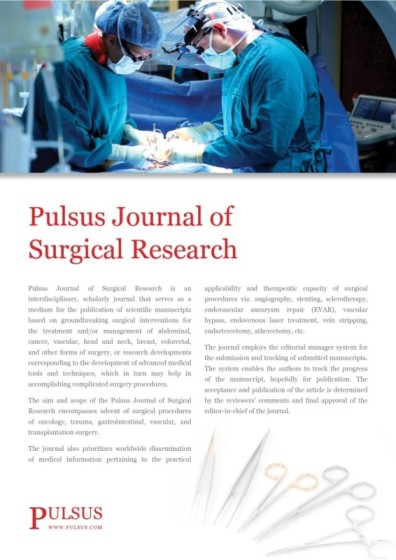Previous Speakers
Conference Information
About Conference
On behalf of the organising committee, we are glad to invite all contributors from all around the world to discover more about the "5th International Conference on Medicine and Surgery," which will be held on July 22, 2022 through Online platform (webinar).
Medicine Congress 2022 seeks to foster, conduct, and promote interdisciplinary medical and surgical research. Young and brilliant students, business delegates, and young research groups from all over the world will attend this meeting to encourage high-quality research with real-world applications in an environment of true international collaboration between scientists and engineers. This is a global meeting where surgeons from different medical departments present their research and share ideas with existing senior scientists in an interactive environment. They will also meet colleagues from all over the world to expand their network, strengthen management and leadership skills, and improve their analytical and research abilities. Workshops, symposia, oral lectures, poster sessions, and special discussions on a broad variety of subjects in surgery and medicine will be part of the programme.
The distinctive features of the Medicine and Surgery conference includes keynote lectures and plenary talks by eminent personalities from around the world in addition to contributed papers both oral and poster presentations.
Medicine Congress 2022 Highlights:
- 100+ Participation (50% Industry: 50% Academia)
- 20+ Innovative Educational Sessions
- 5+ Keynote Speakers
- 20+ Plenary Speakers
- 4+ Workshops and Special Sessions
- 5+ Poster Presentations
- 5+ Young Researchers Forum
- 3+ Exhibitors
- B2B Meetings
Scientific Sessions
Session 1: Surgical innovation and Operative techniques
Minimally invasive surgical procedures, modern devices such as laparoscopes, endoscopes, and robots, and new technology such as artificial intelligence, virtual reality, and personalised medicine have all revolutionised the art, science, and business of surgery. This ground-breaking programme trains both new and experienced surgeons to think and work in the "hospital setting of the future," while also assisting them in overcoming the challenges of learning new methods, comprehending, and integrating new technology, retaining surgical competencies, and applying surgical outcomes data to their practises.
- New procedures and techniques
- New instruments (medical devices, digital surgery, robotics)
- Computer medicine and AI
- Telemedicine
Session 2: General Surgery
General Surgery depends on surgical interventions that specialise in the system, alimentary canal, liver, colon, and other major parts of the physical body. This department gives proper management to the patients suffering from diseases involving skin, soft-tissue, breast, hernia, and trauma. The digestive tract, the abdomen and its contents, the skin and soft tissue, including the breasts, the head and neck, the blood vessels and heart, the endocrine system (hormones and glands), surgical treatment of cancer, surgical management of serious injuries, and care of critically ill patients with surgical needs are all areas of surgery that a general surgeon is involved with.
- Surgical critical care
- Alimentary tract
- Abdomen and its contents
- Breast, skin, and soft tissue
- Endocrine system
Session 3: Medical Research and Advancements
Medical research entails studies in a range of aspects, including biology, chemistry, pharmacology, and toxicology, with the aim of creating new medicines or improving the use of those that are already accessible. It can be interpreted as encompassing both preclinical and clinical research. It provides novel insights into diagnostic and molecular imaging, offering essential prior knowledge for diagnosis and treatment indispensable in all areas of medical sciences.
From breakthroughs in oncology, gene therapies, and heart health, to the development of COVID-19 vaccines that are now being administered domestically and around the world and each day advances in medical research is wide and most impactful. The most significant developments are made when experts from various fields collaborate in novel ways to solve a complicated problem.
- Better treatment for heart diseases
- Therapies for cancer expand with new drugs.
- Minimally invasive surgery and drug therapy
- Robotic techniques revolutionize surgery.
- Medical imaging advancement
- Genetics and gene therapies
Session 4: Internal Medicine
Internal medicine's three mantras are prevention, diagnosis, and treatment of internal diseases. It assist both laboratory and clinical methods, relating to the study and research of human disease. Internists (physicians) are experts in treating patients with undifferentiated or multi-system illnesses. Subspecialties of internal medicine includes allergy & immunology, cardiology, endocrinology, gastroenterology, hematology, infectious disease, nephrology, pulmonology, rheumatology, and sports medicine. It also deals with noncommunicable chronic diseases like diabetes, HTN, COPD, asthma, migraine, stroke, myocardial infarct, chronic renal disorder, and arthritis.
- Methods of disease prevention
- Diagnostic and therapeutic challenges
- Internal medicine diseases
- Disorders & syndromes
Session 5: Types of Surgery
There are different types of surgical procedures available today depending on individual's condition. Unless the operation is an emergency, the doctor will usually discuss the surgery plan with the patient ahead of time. The surgeon will determine which surgery method to use based on medical tests such as blood tests, MRIs, CT scans, X-rays, or any other laboratory work available.
Elective surgery is a planned surgery which is not necessary for the individual to stay in good health for example cosmetic surgeries. Required surgery is done to retain quality of life which is not performed immediately example of required surgery is kidney stone or tumor removal. Emergency surgery is done when patient’s condition is life threatening, surgery is considered emergent.
Cardiovascular surgery, bowel surgery, reconstructive surgery, deep tissue procedures, transplant procedures, and surgeries in the liver, chest, or cranium are all examples of major surgery. Biopsies, wound repairs, and the removal of warts, benign skin lesions, haemorrhoids, and abscesses are all examples of minor procedures.
- Minimally invasive surgery
- Outpatient surgery
- Vascular surgery
- Pediatric surgery
- Breast surgery
- Colon and rectal surgery
Session 6: Complementary and Alternative Medicine
Complementary medicine is a conventional medical treatment where they treat symptoms and diseases using drugs, radiation, or surgery. Allopathic medicine, biomedicine, mainstream medicine, orthodox medicine, and western medicine are all concepts for same. Alternative medicine is any procedure that is reasonably healthy and seeks to achieve the therapeutic benefits of medicine. They use treatments that are more natural and help them feel more in control and often needs the patient to stay active and adapt with lifestyle changes (e.g., diet, exercise, meditation, or psychological exercises)
Ayurveda is a form of complementary and alternative medicine focused on the belief that good health and wellbeing are dependent on a balance of body, mind, and spirit to prevent disease and treat health problems. It is a holistic natural health care system. It has been practised in India for over 4500 years.
- Ayurveda (ayurvedic medicine)
- Integrative medicine
- Nutritional therapy
- Traditional chinese medicine (TCM)
- Homeopathy and folk medicine
- Aromatherapy
Session 7: Nursing and Healthcare
Nursing is the study of principles and realistic concepts for enhancing linked service of people of all ages, their families, societies, and clinicians, as well as maintaining or regaining optimum health and quality of life. It combines natural, applied, and human science into a multidimensional lens to look for better and more innovative ways to provide health care. Nursing care covers the promotion of wellbeing, the prevention of disease, the care of the disabled, and the care of the sick and dying.
Maintaining and restoring health through disease treatment and prevention, especially by qualified and licenced practitioners, is referred to as healthcare (as in medicine, dentistry, clinical psychology, and public health) There are the doctors, nurses, and assistants who identify and manage health problems for patients. They also offer preventative services to patients to help them maintain good health.
- Clinical healthcare
- Therapy and rehabilitation
- Healthcare administration
- Advances in nursing science
- Advanced emergency nursing
- Medical ethics and health policies
Session 8: Surgical Oncology
Surgical oncology is a field of cancer treatment that uses surgery to identify, stage, and treat cancer. Palliative operations are performed by surgical oncologists to help control pain, boost a patient's comfort level, and treat cancer-related symptoms and side effects. Conditions that fall under the category of surgical oncology includes breast cancer, colorectal cancer, head and neck cancer, melanoma, pancreatic cancer/tumours, sarcoma, other types of skin cancer and thyroid tumours.
Almost all cells in the body can mutate and become cancerous or form tumours. As opposed to specialising in all forms of cancer, it is normal for a surgeon to specialise in treating illnesses in a particular part of the body, with surgical oncology as a sub-specialty. Cancer research is conducted to determine the cause of the disease and to establish strategies for prevention, diagnosis, care, and cure. It extends from the study of disease transmission, execution of clinical trials, molecular science and these applications subsume surgery, chemotherapy, radiation treatment, and immunotherapy and hormone treatment.
- Surgical interventions in cancer
- Targeted cancer therapy.
- Precision medicine and personalized therapy.
- Studies on signal transduction in relation to drug action.
- Radiation oncology
Session 9: Public Health
The science of preserving and enhancing people's and communities' health is known as public health. Promoting healthier behaviours, studying disease and injury prevention, and identifying, preventing, and reacting to infectious diseases are all part of this job. The overall goal of public health is to protect the health of whole communities.
Handwashing and breastfeeding promotion, vaccination delivery, suicide prevention, smoking cessation, obesity education, growing healthcare accessibility, and condom distribution are all common public health programmes aimed at preventing the spread of sexually transmitted diseases. In any disease epidemic or health emergency, risk communication is a critical public health intervention. It refers to the real-time sharing of information, advice, and opinions between experts, officials, and people who are threatened with harm to make informed decisions and adopt protective behaviours.
- Public health perspective in the times of COVID-19
- Vaccination delivery
- Infectious diseases
- Global Pandemic
Session 10: Neuro and thoracic surgery
It is a medical specialty that deals with the diagnosis and care of patients who have injuries to, or diseases/disorders of, the brain, spinal cord, and spinal column, as well as peripheral nerves in all parts of the body. Adult and paediatric patients are also treated in the neurosurgical specialty. While coping with fragile sections of the nervous system, neurosurgery necessitates physical dexterity and deep focus. Neurosurgeons use instruments including magnetic resonance imaging and cranial taxonomy scans to detect symptoms during physical examinations.
Thoracic surgery focuses on heart, lungs, and oesophagus which is among the organs in the chest that can be operated by a surgeon. Minimally invasive methods or an open surgical procedure known as a thoracotomy are also options for thoracic surgery.
- Video-assisted thoracic surgery
- Robotic thoracic surgery
- Neurological disorder and strokes
- Spinal neurosurgery
- Neuroscience and artificial intelligent
Session 11: Plastic Surgery and Cosmetic Trends
Plastic surgery is used to improve a person's appearance as well as reconstruct facial and body tissue defects caused by illness, trauma, or birth defects. Both reconstructive and cosmetic operations are performed in plastic surgery. Reconstructive surgery is conducted on dysfunctional body structures that have evolved because of trauma or disease.
Cosmetic surgery is known as elective since it treats areas that function normally. The main objectives are to enhance visual appeal, symmetry, and proportion. Aesthetic surgery may be done on any part of the body, including the head, neck, and face. Different types of cosmetic surgery include rhinoplasty, liposuction, blepharoplasty, rhytidectomy (facelift), and breast augmentation.
- Burn Repair Surgery
- Hand Surgery
- Reconstruction of Lower Extremities
- Facial rejuvenation
- Body contouring
- Breast enhancement
Session 12: Nanomedicine and Nanobiotechnology
Nanomedicine is the use of nanotechnology to achieve healthcare advancement. It makes use of the properties produced by a material at its nanometric scale of 10-9 m, which often vary from the same material at a larger scale in terms of physics, chemistry, and biology. Nanoparticles are made up of millions of molecules that need to come together and work in concert. Traditional manufacturing methods adapted from processes built over decades for small molecule drugs do not sufficiently meet the specific needs of nanomedicine production
Nanobiotechnology is a branch of nanotechnology that develops and applies tools to the study of biological phenomena. Nanoparticles, for example, may be used as probes, sensors, or vehicles for the transmission of biomolecules in cellular systems.
- Nanotechnology approaches to biology
- Therapeutic approaches and drug discovery
- Biology-inspired nanomaterials.
- Implantable materials and surgical technologies
- Medical nanodevices
- Novel drug delivery systems
Session 13: Rehabilitation robotics
Rehabilitation robotics can radically transform the way physiotherapists provide care to patients in the future as technology progresses. The key goals of current robotic development are to combine information technology and rehabilitation robotics to provide care for the patient over the internet, allowing patients to receive treatment from the comfort of their own homes.
Many patients will benefit from the use of robotics in rehabilitation. Patients of spinal cord injury, stroke, cerebral palsy, Parkinson's disease, multiple sclerosis, and traumatic brain injury are among them. The main aim is to assist people in overcoming disabilities, recovering more efficiently, and living more satisfying lives. Other fields of robotic technology currently being studied include developing lighter weight technology, making robots available over the counter, and integrating augmented reality and video games to improve patient motivation.
- Neurorehabilitation
- Biomedical engineering
- Assistive, diagnostic, therapeutic robotics
- Clinical experience, evaluation, and outcomes
Session 14: Oral and maxillofacial surgery
Surgeons diagnose and treat a wide range of illnesses, fractures, and defects in the head, neck, ears, jaws, and oral and maxillofacial hard and soft tissues. Facial injuries should be diagnosed and treated as soon as possible because they can be life-changing or even life-threatening. Oral and maxillofacial surgeons treat people of all ages, from new-borns to the elderly. Cleft lip/palate is a condition in which an infant is born with or develops deformities of the skull or face. The most of their work with young people includes surgery in the wake of an injury or accident. They sometimes treat oral cancer and skin tumours of the face and head in the elderly.
- Skin cancer surgery
- Cysts and tumours
- Corrective jaw (Orthognathic) Surgery
- Cleft lip /palate surgery
Session 15: Treatment & Diagnosis of Diseases
Clinicians use diagnostic medical instruments and supplies to assess and analyse different aspects of a patient's health to make a diagnosis. A clinician will then prescribe an effective treatment plan after a diagnosis has been made.
A medical treatment normally involves dietary and behavioural changes, such as avoiding smoking, as well as drug administration, whether injectable or not. Radiology, endoscopy, and phototherapy are examples of tests that occur between conventional procedures and surgery.
The method of deciding which illness or disorder triggers a person's symptoms and signs is known as medical diagnosis. Many signs and symptoms are nonspecific, making diagnosis difficult. Various healthcare professionals, like a psychologist, physiotherapist, dentist, podiatrist, optometrist, healthcare scientist, or physician, may perform a diagnostic technique
- Medical imaging techniques
- Clinical pathology
- Microbiology
- Diagnostic Tests and Medical Procedures
Session 16: Oral Health and Dentistry
The health of our teeth, gums, and the overall oral-facial system, which allows us to smile, speak, and chew, is referred to as oral health. Oral illness is also linked to risky habits including smoking and consuming sugary meals and beverages. Other chronic conditions, such as diabetes and heart disease, are linked to poor dental health.
Dentistry deals with the prevention and treatment of oral disorders, such as diseases of the teeth and their supporting structures, as well as diseases of the mouth's soft tissues.
- Periodontal disease
- Oral cancer
- Tooth decay
- Dental health
- Dental nursing
- Dental implants and dentures
Session 17: Wound Care Treatment & Management
The surface of the skin is home to a wide variety of bacteria, so open wounds need special attention and hygiene to avoid infection. Open wounds are those in which the body's tissues are exposed to the outside world.
Bacterial colonies on the skin may cause open wounds to become infected. Proper hygiene and wound care procedures, on the other hand, will help reduce the risk of infection and encourage faster healing. Minor open wounds do not need medical care but keeping the wound clean with over-the-counter antibiotic ointment is a good idea.
- Wound Care and Trauma
- Tissue Engineering in Wound Repair
- Wound Care Nursing
- Surgical Wound Care
- Diabetes Wound Care
Session 18: Palliative Care Research
Palliative care is a series of medical measures designed to relieve the symptoms of a medical condition, most commonly pain. Palliative care's main purpose is to alleviate and prevent patient suffering.
- New palliative Care technology
- Healthcare case studies
- Evidence-based practice
- Community palliative care practice
- Adult health palliative care
Session 19: Clinical Trials and Case Reports
Clinical trials are scientific trials that are performed to explore new ways to avoid, screen for, diagnose, and treat illness. These clinical trials can also reveal which medical treatments are most effective for specific illnesses or populations. Clinical trials generate high-quality results that can be used to make healthcare decisions.
Case Reports will cover the entire spectrum of medicine in the health sciences, including all clinical medical specialties, veterinary medicine, nursing, allied health, and dentistry, if they deliver a significant, realistic, and generalizable teaching message. A clinical case report aids the medical practitioners to share patients’ case that are unusual. The importance of this evidence is to generate detailed information of individual people which informs both clinical and our daily clinical care.
- Preclinical trails
- Clinical case studies
- Drug clinical trials
- Clinical research & bioethics
Session 20: Obstetrics and Gynaecology
Obstetrics is a branch of science which deals with the medicine and surgery concerned with childbirth and midwifery. Gynaecology is a branch of physiology and medicine which deals with the functions and diseases specific to women and girl child especially those affecting the reproductive system. The difference between obstetricians and gynaecologists is considered one speciality, it comprises two distinct fields which involves care during pregnancy, pre-conception, childbirth and immediate after delivery. Gynaecology involves care of all women’s health issues.
- Adolescent gynaecology and abortion care
- Hypertensive disorders in pregnancy
- Cancer types and its prevention
- Postpartum Haemorrhage and hormone therapy
Market Analysis
The global demand for general surgery devices was worth USD 14.1 billion in 2018 and is projected to rise at an annual rate of 8.5 percent from 2019 to 2026. The market is expected to be driven by an increase in the number of surgical procedures performed, as well as technological advances in the field. Patients' increasing sensitivity, as well as the high incidence of heart and gastrointestinal conditions, as well as the prevalence of osteoporosis, have resulted in increased demand for surgeries.
Furthermore, the market is expected to expand due to rising demand for minimally invasive, robotic, and computer-assisted surgery. The market is expected to be driven by technological advances and developing countries' adoption of advanced surgeries. The robotics and computer-assisted industry has only recently begun to gain traction.
This escalation is developing the need to analyse, review and forecast the growth of the minimally invasive device market. Medical device companies that can launch new revolutionary equipment would be rewarded with significant benefits due to the rapid evolution of the industry with the use of technology. The need to analyse, study, and forecast the growth of the minimally invasive product market is increasing because of this escalation. Medical device companies that can launch new advanced equipment will be rewarded with tremendous benefits due to the rapid evolution of the industry in the use of technology.
The following are some of the factors influencing the market's growth:
- Technical advances
- Enhanced patient quality of life
- Decreased healthcare spending.
- Rise in the global ageing population
- There is an ever-increasing need for minimally invasive procedures.
More than 170,000 people in Spain's capital (Catalonia) are awaiting surgery from autonomous communities, while Andalusia, which borders Catalonia, has 167 thousand patients. In comparison to the other cities, the population of Madrid is much smaller, with just 60 thousand people on the waiting list. The competitive nature of the business world in today's global economy is growing the need for business professionals to keep up with current market conditions.












